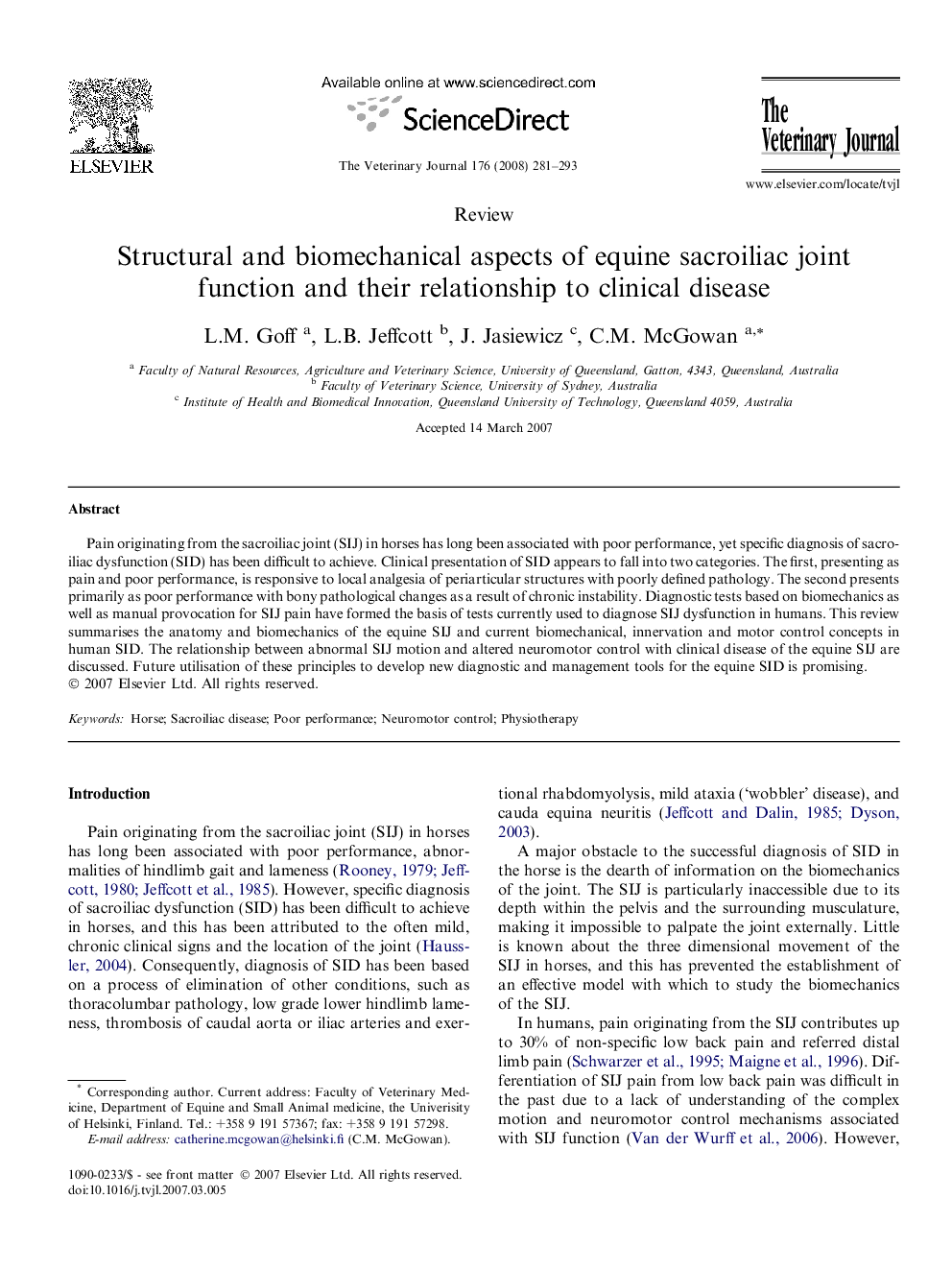| Article ID | Journal | Published Year | Pages | File Type |
|---|---|---|---|---|
| 2466219 | The Veterinary Journal | 2008 | 13 Pages |
Pain originating from the sacroiliac joint (SIJ) in horses has long been associated with poor performance, yet specific diagnosis of sacroiliac dysfunction (SID) has been difficult to achieve. Clinical presentation of SID appears to fall into two categories. The first, presenting as pain and poor performance, is responsive to local analgesia of periarticular structures with poorly defined pathology. The second presents primarily as poor performance with bony pathological changes as a result of chronic instability. Diagnostic tests based on biomechanics as well as manual provocation for SIJ pain have formed the basis of tests currently used to diagnose SIJ dysfunction in humans. This review summarises the anatomy and biomechanics of the equine SIJ and current biomechanical, innervation and motor control concepts in human SID. The relationship between abnormal SIJ motion and altered neuromotor control with clinical disease of the equine SIJ are discussed. Future utilisation of these principles to develop new diagnostic and management tools for the equine SID is promising.
